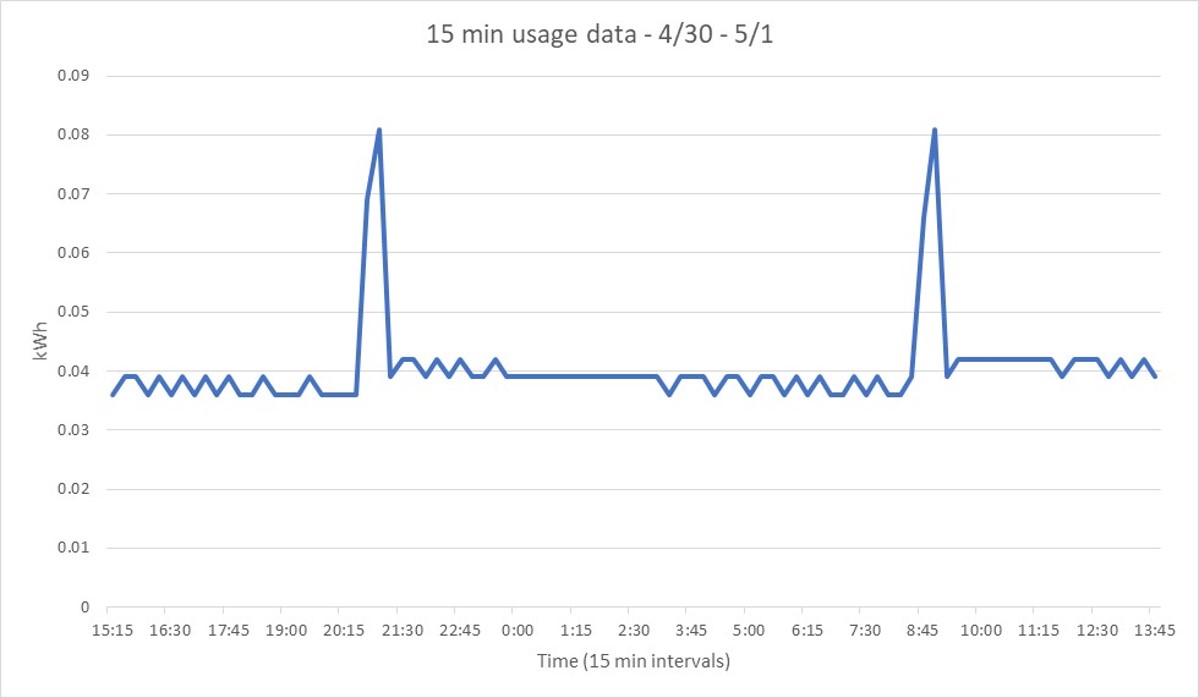What constitutes base load energy demand? One residential perspective.
What does residential base load energy demand look like? My family and I have been living outside of New York City (in the Catskills) since March 13. Con Edison installed an interval meter for our 950 square foot apartment in February. I thought it would be interesting to see what has happened to our electricity usage since we left town.
Energy demand over one 24 hour period
I have to confess that even for a person who makes a living navigating usage, data and analytics, it was not entirely straight forward to get the interval data for my apartment from Con Ed. Nevertheless, I was able download 24 hours of 15 minute data for April 30 at 3:15pm to May 1 at 2:45pm. This is what I found:

There are no lights on in the apartment and no plug loads working now. We believe, unless there is some phantom plug load engaged, that this usage represents the refrigerator only– with a few spikes in usage that show up when the refrigerator compressor cycles on.
Our gas usage is 0, and electricity is still 110 kWh per month, more or less. According to Con Edison, this usage represents a 28% drop month over month, which saved us $10. Usage and cost impacts from the same month, prior year were more significant “Your electricity use went down 57.50%, saving you $28.32.” The reason the month-over-month impacts are not as significant is because the lock down occurred in the middle of a billing period for us, which was captured in part of the prior month’s invoice. Compared to the same month last year, our costs dropped approximately 33%, while our usage declined almost 58%.
How does reduced energy demand impact our bill?
Answer? Some– our bill is about half of what it was prior to leaving town. Even though our usage is down to close to 0, it costs about $40 to $50 a month just to keep the lights on and the gas (for cooking) at the ready.
Bottom line for energy decision makers and finance professionals: There isn’t really much to take away from one residential perspective–except that refrigerators really do drive basic energy consumption in the household. It is interesting to see the relationship between costs and usage– which are not linear. You get a sense of what we have to pay, minimally, to keep connected to utility infrastructure.
